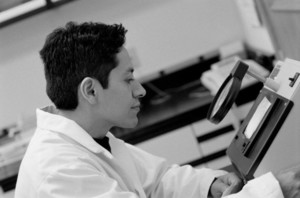As the patent expiry dates of the original erythropoietins drew near, much concern was expressed in 2004 about possible biosimilar competitors. Product quality, safety and efficacy of biopharmaceuticals are highly dependent on the processes of production, purification and formulation. How have these genuine concerns been answered by the EMA in granting marketing approval, and have any other problems come to light?
Biosimilar epoetins: how similar are they?
Biosimilars/Research
|
Posted 24/09/2010
 0
Post your comment
0
Post your comment

The primary importance of the production process was demonstrated when changes in the production process of an originator recombinant erythropoietin resulted in patients developing pure red cell aplasia. Today we say “the process is the product”. The European biosimilar framework does not require developers to use a manufacturing process for a biosimilar that is identical to the one taken for the reference product. It acknowledges that “it is not expected that the quality attributes in the similar biological and reference medicinal products will be identical.” Thus, even if manufacturing processes deviate from each other and thus inevitably lead to distinct quality attributes, such as process- and product-related impurities, the biosimilar development pathway is not per se excluded. So an understanding has developed that these compounds are not interchangeable in the same way as generic versions of drugs. But although the biosimilars may differ noticeably from each other and originator medicines, they are not inferior, just different.
Similar questions to those being asked about the first biosimilars in 2004 are now being asked about biosimilar monoclonal antibodies (mAbs). But with the confidence built from experience, it is expected that the regulatory authorities and the biotech industry will work together to produce standards suitable for the next generation biosimilar mAbs.
Related article
Approval of biosimilar epoetins: how similar are they?
References
Schellekens H. Biosimilar epoetins: how similar are they? Eur J Hosp Pharm. 2004;10(3):43-7.
Cameron JS. European best practice guidelines for the management of anaemia in patients with chronic renal failure. Nephrol Dial Transplant. 1999;14(S2):61-5.
General
Samsung Bioepis wins Pyzchiva case; Regeneron patent rulings threaten foreign biosimilars
Chinese biosimilars go global: growth, partnerships, and challenges
What is the future for the US biosimilar interchangeability designation

Biosimilars/Research Posted 05/06/2025
Biosimilar clinical efficacy studies: are they still necessary?

Biosimilars/Research Posted 27/05/2025
The best selling biotechnology drugs of 2008: the next biosimilars targets








Post your comment